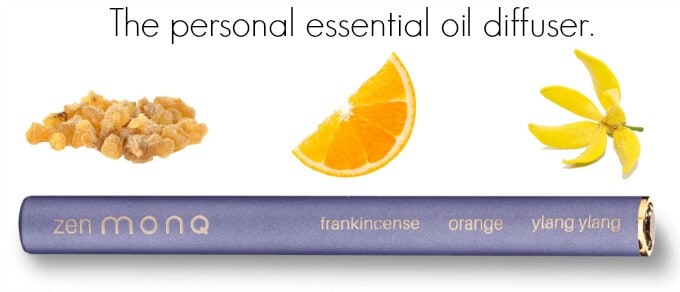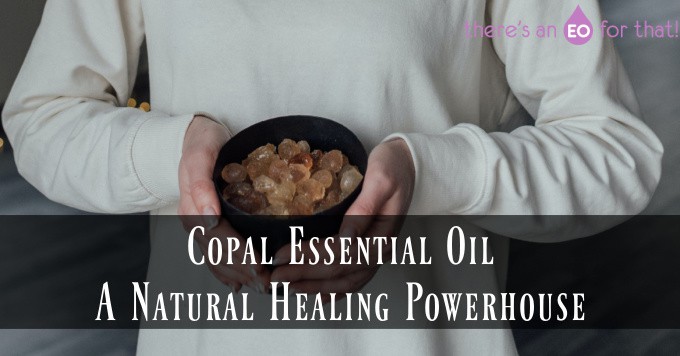If you’re interested in essential oils, then you’ve probably heard of copal essential oil. This versatile, powerful, and somewhat lesser-known oil comes from the resin of the copal tree and has been used for centuries in traditional Central and South American healing practices as a spiritual incense, perfume, as well as a potent medicine for treating asthma, bronchitis, coughs, and colds.
Today, copal is gaining popularity as an alternative remedy for a wide range of health concerns. From its anti-inflammatory properties to its ability to boost cognitive function, copal essential oil is a natural powerhouse with a host of potential benefits.
Today, we’ll explore the many benefits of copal essential oil and how you can use it to improve your health.
What is Copal Essential Oil?
The word copal is derived from the Nahuatl word copalli, which means “incense.”(though I have also seen “sacred blood of the trees”). “Copal” is a general name that describes the resinous substance exuded from a variety of tree genera.
These trees usually come from tropical climates, and their resin has historical uses by indigenous tribes in ceremonial settings.
Copal is used for a number of spiritual rituals since ancient times.
Copal resin is an important ceremonial incense ingredient and folk medicine of Meso Central American cultures. The essential oil made from copal resin is a highly-sought after aromatherapy oil due to its many healing properties.
Ancient Mexico saw copal employed in a variety of ways. Chewing gum, incense for ceremonial sweat lodges, jewelry, and art were just some of the ways that copal was woven into everyday life.
It is extracted from the resin of the Protium copal tree, which is native to Central and South America. This particular species of tree produces a clear and sweet-smelling resin with many therapeutic benefits.
Copal essential oil has strong anti-inflammatory properties and can treat various skin conditions. It also possesses calming effects that make it ideal for stress management and meditation practices. It also encourages better sleep quality when used before bed.
What Does Copal Smell Like?
Copal resin has a distinct, sweet smell that can be compared to the scent of frankincense or pine with a fresh, green, sweet note of citrus, honey, and amber.
It has a similar aroma to Elemi, Palo Santo, Opoponax, Frankincense, and Myrrh – other resinous trees that belong to the Burseraceae family, also known as the incense tree family.
It is said to be grounding and calming, promoting relaxation and mindfulness.
Copal Essential Oil Benefits
Copal essential oil is a rare, lesser-known oil from an aromatic tree found in parts of Central and South America. This oil has some incredible benefits and is great for overall well-being. It possesses anti-inflammatory properties, which can help treat a variety of skin conditions like eczema, psoriasis, and acne.
Copal essential oil also has calming effects making it perfect for aromatherapy or meditation, and can reduce stress and improve mental clarity.
Regular use of copal essential oil has been known to regulate emotions as well as promote restful sleep, allowing for a refreshed feeling in the morning.
Copal essential oil has a number of different benefits and medicinal uses, which include:
- Reduces stress and promotes restful sleep
- Can be used as an antiseptic
- Eases rheumatism
- Has pain relieving properties – great for roll-on recipes and massage oil
- Is antibacterial
- It can stop bleeding in minor wounds and offer pain relief
- Helps soothe cough and congestion
- It can alleviate insect bites
- Improves mental clarity
- Regulates mood by boosting the nervous system
- Reduces anxiety
- Improves mental clarity
- Possesses anti-inflammatory properties
- Treats skin conditions like eczema and acne
- Helps heal cuts, scrapes, and bruises
- Repels mosquitos and other pests
- Protects against oxidative stress and free radicals – this is great for skin care and anti-aging!
How Can Copal Essential Oil Be Used For Healing Purposes?
Copal essential oil has numerous health benefits and has been widely used as a natural remedy for centuries. It can be used topically to help skin conditions such as psoriasis or eczema, reduce pain and inflammation, or provide relief from minor skin irritations like cuts, scrapes, and bruises.
It is often used topically as a roll-on, salve, or massage oil on the chest and throat as an expectorant for calming coughing fits and easing sore throats.
Copal essential oil can also be used in aromatherapy for spiritual and emotional healing, stress relief, and anxiety reduction. Simply diffuse a few drops in an essential oil diffuser or apply it topically on the wrists and throat with a roll-on as needed during stressful situations or before sleep.
What Are Some of The Best Ways to Use Copal Essential Oil For Maximum Benefit?
Copal essential oil can be used in many ways for maximum benefit. Perhaps its most therapeutic use is massage oil – adding 8-10 drops of copal to 1 oz of carrier oil (like sweet almond oil) and massaging it into the desired area can help relieve stiffness, tension, and pain.
For immediate relief from acute pain, copal oil can also be applied as a topical treatment by mixing 6-7 drops in a roll-on bottle of almond or coconut oil and then rolling it onto any affected area.
In addition to massage or topical treatments, copal essential oil can also be inhaled directly (simply smell the oil from the bottle for a few slow breaths) or through a diffuser to help relieve colds or other respiratory illnesses or be added to a bath to ease any muscle aches and pains.
For more recipes, please check out my posts below:
How to Make Raven Essential Oil for Respiratory Support
Bronchitis Blends for Children
Essential Oils for Over-Exercised Muscles
Essential Oil Quick Usage Guide – Aches and Pains
Copal Essential Oil Precautions
Copal essential oil is a fantastic way to experience the benefits of copal, but it should be used in moderation and with certain safety precautions in place.
As always, be sure to dilute any essential oil you want to use properly based on the application chosen. Do not use this essential oil undiluted, as it can greatly irritate the skin, and do not apply it to sensitive areas of the body.
Do not ingest copal essential oil.
Store it out of reach of children.
Where to Buy Copal Essential Oil
This oil is exceedingly rare to find, especially if you’re looking for pure unadulterated oil. The only place I have found it is HERE.
Frequently Asked Questions About Copal Essential Oil
What is copal oil good for?
Copal essential oil is known to have several therapeutic benefits. It has strong anti-inflammatory properties, making it effective for treating skin conditions and minor injuries. It can also be used in anti-aging skin care recipes, used as a chest rub for coughs, and can even repel mosquitos.
Is copal the same as copaiba?
No, copal and copaiba are two different essential oils with different properties.
Copal is a natural resin derived from the sap of Protium copal (Burseraceae) used by the cultures of pre-Columbian Mesoamerica as ceremonially burned incense and for other purposes, while copaiba is an essential oil distilled from the trunk of several pinnate-leaved South American leguminous trees (genus Copaifera).
They have distinct fragrances and therapeutic benefits, but they should not be confused or used interchangeably.
Copaiba oil is often used to increase the efficacy of other essential oils.
What is copal scent?
What is copal oil?
Copal oil is a type of therapeutic essential oil derived from the resin of the Protium copal (Burseraceae) tree.
What is copal used for?
Copal is commonly used in aromatherapy and spiritual practices. It is said to reduce stress, improve sleep, reduce pain, and enhance meditation and focus. It can also be used as an ingredient in roll-ons and massage oil for its skin-nourishing properties.
What is the essential oil copaiba used for?
Copaiba essential oil is commonly used in aromatherapy and spiritual practices. It is said to have calming and analgesic properties, making it useful for reducing tension, stress, and pain.
Copaiba is also said to help support the respiratory system, act as an anti-inflammatory, boost immune system health, promote wound healing, and reduce skin irritation.
Is copal resin toxic?
Copal resin is not toxic, but it can cause skin irritation if not properly diluted. It is important to use the resin only as directed and always with caution.
Is frankincense and copal the same?
No, frankincense and copal are not the same. Frankincense is a type of resin extracted from the bark of the Boswellia tree, while copal is a resin derived from various trees in Central and South America.
Both can be used as incense or essential oils, but they offer different properties.
Does copal smell like frankincense?
Copal and frankincense have similar scents, but the smell of copal is slightly sweeter and lighter than that of frankincense.
What is the purpose of the copal?
Copal has many uses and can be burned as incense to purify the air, used medicinally to treat skin conditions and respiratory ailments and even added to cosmetics for its moisturizing properties.
It is also believed to bring luck, prosperity, and protection.
What does copal incense smoke do, and why do people burn copal?
Copal incense smoke is believed to purify the air, attract positive energy, and promote spiritual well-being.
It is often burned before prayer or meditation to create a more conducive atmosphere for such activities.
Is copal the same as frankincense?
No, copal and frankincense are different resins. Copal comes from an evergreen tree, while frankincense comes from a type of myrrh-producing shrub.
Both resins have been used for centuries for their fragrance and purification qualities.
What is copaiba essential used for?
Copaiba essential oil is used for a variety of healing and medicinal purposes. Copaiba is often used as an analgesic, anti-inflammatory, anti-fungal, and antiseptic.
It has also been proven to help with bronchitis and asthma.
It has also been shown to have calming properties that can be beneficial in the treatment of anxiety, stress, and depression.
What plant does copaiba come from?
Copaiba is derived from the resin of a South American tree of the genus Copaifera. It is native to the Amazon region and found primarily in Brazil, Peru, Colombia, and Venezuela.
What does burning copal smell like?
Burning copal has a strong, sweet, and pungent fragrance. It is often likened to the smell of incense or burning resin. People who have experienced it have described the scent as being earthy, woody, and slightly smoky.
Many use the oil for spiritual reasons.
Does copal smell good?
Yes, many have described copal as having a sensuous aroma.
What is another name for copaiba?
What is copaiba best used for?
Copaiba is a natural product derived from tree sap, most commonly found in South America. It is most often used to treat various conditions such as inflammation, arthritis, skin issues, and infections.
It has also been used historically as an antiseptic and healing salve for wounds.
What essential oil is similar to copaiba?
What is burning copal good for?
Burning copal is an ancient spiritual practice used for ceremonial purposes. It is believed to help cleanse the body and soul, attract positive energy and clarity, activate protective energies, and support healing.
What does the copal symbolize?
What is Mexican copal used for?
What incense is copal?
Copal is an aromatic resin that is used for incense and medicinal purposes. It has its origins in Mexico, where it is burned in ceremonies for protection, cleansing, healing, and offering prayers to the gods.
The smoke from copal incense is said to bring good luck, attract benevolent spirits and energies, and help people connect with their higher selves.
What are the different types of copal?
There are several types of Copal incense that originate in Mexico:
- Amparo Copal: This type is used for physical and spiritual protection.
- Virgen de Guadalupe Copal: Commonly associated with the legend of the Virgin Mary, it can be used for fertility and healing rituals.
- Red Copal: Used to bring abundance, joy, and good luck
- San Judas Tadeo Copal: Associated with healing and justice
- Camino Negro Copal: Used for cleaning negative energies and attracting positive ones
What essential oil is the strongest antibacterial?
Tea tree oil is considered one of the strongest antibacterial essential oils. It has been studied for its potency against a variety of bacteria, including strains like E. coli, Staphylococci, and Candida albicans.
Studies have also shown that it can help protect against viruses such as rhinovirus and herpes simplex virus type 1.
What essential oils mix with copaiba?
Copaiba essential oil is known to mix or blend well with other essential oils, like:
- Lavender: Sweet and floral
- Bergamot: Citrusy, uplifting scent
- Eucalyptus: Refreshing and woodsy
- Rosemary: Herbaceous and earthy
- Cedarwood: Rich and woodsy scent
Where is copal found?
How did the Mayans use copal?
What are the benefits of copal incense?
- Copal incense is believed to bring spiritual cleansing and protection from evil spirits.
- It may help relieve pain, treat pulmonary diseases, and improve circulation.
- It is used as an offering and for religious ceremonies by the Mayans.
- It has a pleasant smell that can improve the atmosphere of any space.
What do you burn with copal?
Is copal the same as palo santo?
What is copal made of?
Copal is a natural incense resin that is made from tree sap. It can be sourced from many different species of trees. The resin is collected by hand and then dried over a period of several weeks before it can be used in incense-burning ceremonies.
What is Mayan copal used for?
Mayan Copal is a natural resin used in incense-burning ceremonies by the ancient Mayans. It has been used for centuries to help cleanse negative energies and purify the air of toxins, as well as provide spiritual protection during ceremonies. It was also believed to possess restorative and healing properties.
Did Mayans use copal?
Yes, the ancient Mayans used copal as a natural incense resin in their spiritual ceremonies. It was believed to have cleansing, restorative, and healing properties that could help protect against negative energies and purify the air of toxins.
How long does copal take to form?
Mayan copal takes around six months to two years to form naturally in its resin form. It forms when the bark of the Almacego tree is cut and allowed to ooze sap which then hardens over time into a thick, fragrant, yellow-brown resin.
What is similar to palo santo?
Palo santo is similar to other types of incense and natural resins like myrrh, frankincense, copal, and dragon’s blood.
All of these have a smoky, fragrant scent that can purify the air of negative energies.
Where is copal used?
Copal is traditionally used in spiritual and religious ceremonies, especially in Latin America.
It is associated with the purification of negative energies and can be used to create sacred spaces. Copal is also an ingredient in some types of traditional incense and perfumes.
What is the meaning of burning copal?
Burning copal is believed to have symbolic and spiritual meaning, often related to cleansing negative energy and inviting positive energies. It is also thought to bring protection, luck, and good fortune.
Copal creates a pleasant aroma that can help create an environment of peace and concentration.
Is copal a drug?
No, copal is not a drug. It is a natural resin derived from the sap of various tree species, mainly found in Central and South America.
Copal has been used by many cultures for centuries as incense or perfume and is thought to have spiritual or symbolic meanings.
What is the difference between copal and frankincense?
The main difference between copal and frankincense is their origin.
Copal is a Central and South American tree resin, while frankincense is an African tree resin.
They both have been used for centuries as incense or perfume and are thought to have spiritual or symbolic meanings, although copal has a slightly sweeter aroma than frankincense.
 This post contains affiliate links. We are a participant in the Amazon Services LLC Associates Program, an affiliate advertising program designed to provide a means for us to earn fees by linking to Amazon.com and affiliated sites. Please read my full disclosure and disclaimer.
This post contains affiliate links. We are a participant in the Amazon Services LLC Associates Program, an affiliate advertising program designed to provide a means for us to earn fees by linking to Amazon.com and affiliated sites. Please read my full disclosure and disclaimer. 


Leave a Reply